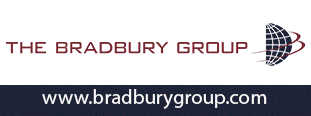In this
article we will discuss the key areas which are very important be addressed in
order to achieve the AFTA’s objectives.
To have a better understanding on how AFTA will change the region’s
steel business model, we need to start with an ideal condition.
Firsty,
AFTA will promote intra-ASEAN steel trade because it should be cheaper to for a
member country to buy steel product from a fellow member. The basic condition
is that the CEPT rates are lower than MFN (normal) import duties. It
will be cheaper for a tinplate mill in Thailand
to source tin mill black plate from an Indonesia producer. Similarly, a Malaysian cold rolling mill will
prefer hot rolled coils from Thailand.
The following table illustrates the tariff comparison in three ASEAN
members. Please note that tariff
rates provided in the table are of common grade and for illustration purpose
only. Tariff levied on special grades may be different. For the most recent rate for each tariff
line, always refer to the official releases from the authorities.
Tariff
Comparison for Selected Products (%)
|
Tariff
|
Product
|
Thailand
|
Malaysia
|
Indonesia
|
|
MFN
|
CEPT
|
MFN
|
CEPT
|
MFN
|
CEPT
|
|
72.07
|
Slab
|
1
|
0
|
10
|
5
|
0
|
0
|
|
72.07
|
Billet
|
1
|
0
|
0
|
0
|
0
|
0
|
|
72.08
|
HR sheet
|
5
|
2-5
|
50
|
5
|
7.5
|
5
|
|
72.09
|
CR sheet
|
7
|
5
|
50
|
5
|
12.5
|
5
|
|
72.10
|
Galvanised
sheet
|
9
|
5
|
50
|
5
|
15
|
5
|
|
72.13
|
Bar/rod
|
5
|
|
15
|
5
|
15
|
0-5
|
(Sources: www.aseansec.org, GAPBESI)
Referring to the table, in the case of exporting steel products to Malaysia, an ASEAN producer shall
enjoy a price advantage over the non-ASEAN suppliers as their product will be
taxed at a 45% lower than other at a Malaysian port. If the price of the product is US$ 500,
tax levied will only be $25 instead of an overwhelming $250 at 50% MFN
rate. In a lesser degree, a galvanizing
mill in Thailand will enjoy
2% less import duty if they purchase the cold rolled coils from any producer in
Indonesia or Malaysia. However, no incentive will be given for a bar
mills in Malaysia or Indonesia when
they source billets from a Thai producer.
Secondly,
it will promote new investment in the region.
Until today the region has been importing all kind of steel products
from non-ASEAN countries. Since only
producers inside AFTA who enjoy the privilege of CEPT scheme, a window of
opportunities is now open. Both existing
and new steel companies now has the incentive to build new capacities in the
region as they can consider the whole ASEAN as a protected ‘domestic’ market. For example, the region imported more than 16
million tons of flat steel product last year, mostly from non-ASEAN producers.
The
region’s steel consumption is growing steadily and there are opportunities to
investing in the region for all phases of iron and steel industry, from
ironmaking to coating.
However, steel
business –like other business- if far from an ideal situation. Lack of mutual interests, different policies
and approaches of governments, and different industry structure and levels of development
are distorting the intra-AFTA steel trade.
Capacity,
Cost and Quality barriers
From a
different perspective -instead of promoting new investments- the region’s
undercapacity is a barrier to intra-AFTA steel trade. Simply there is not enough steel produced in
the region which can fulfill the growing demand. It is not easy for the ASEAN
producers to simply increase their capacity and substitute imported steel from
non-ASEAN countries. The higher costs
associated with the region’s steel products are significantly higher than the
large producers in other parts of the world.
The price
advantage provided by CEPT scheme may not be significant when importers can
source cheap commercial grade steel from low cost producers (e.g. China, Russia,
India).
On top of
that, some segments demand a very high quality of steel product and services
which may be beyond the reach of the ASEAN producers, at least until now. Most of the steel products consumed by
automotive, electronics, home appliances
industries must meet the strictest quality requirements. In the long product sector, cold heading
quality and high carbon wire rods are still imported because the local
producers can not produce them.
Non-tariff
barrier
AFTA is
designed to effectively reduce all kind of trade barriers among ASEAN members.
However, we still see some non-tariff barrier applied in the region. The
non-tariff barriers are the other common instruments of international trade
policy.
For
example, to import a steel product into Malaysia, an importer needs to get
Approved Permit (AP) from the Ministry of International Trade and
Industry.
Bilateral
and Extended FTA
Both
bilateral and extended AFTA will definitely complicate the implementation of
AFTA arrangement for steel product. For
example, an ASEAN-China FTA will effectively provide preferential treatment for
steel products from China
and there is no way that small local producers can compete with large steel
companies of China.
Concluding
remarks
The ASEAN
steel producers should have a consultative mechanism for promoting common
objectives and concerns in order to effectively applying the CEPT scheme. Governments are also responsible to adopt a
coordinated regional policy instead of national steel policy. The regional policy is important to promote a
view towards eliminating remaining barriers and ultimately promoting new
investments. The region’s steel industry will have a better chance of survival
when the relatively small domestic markets truly merged and becoming an
integrated regional market.




